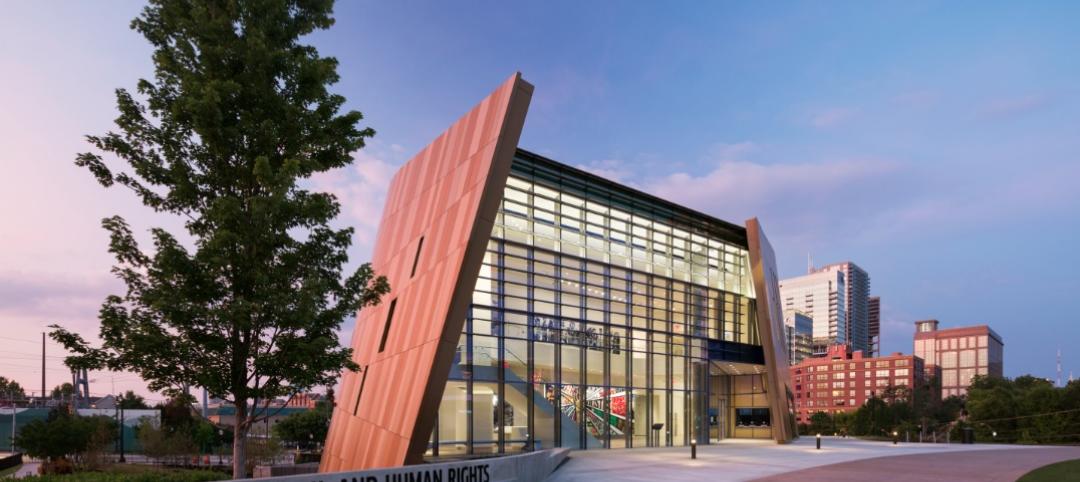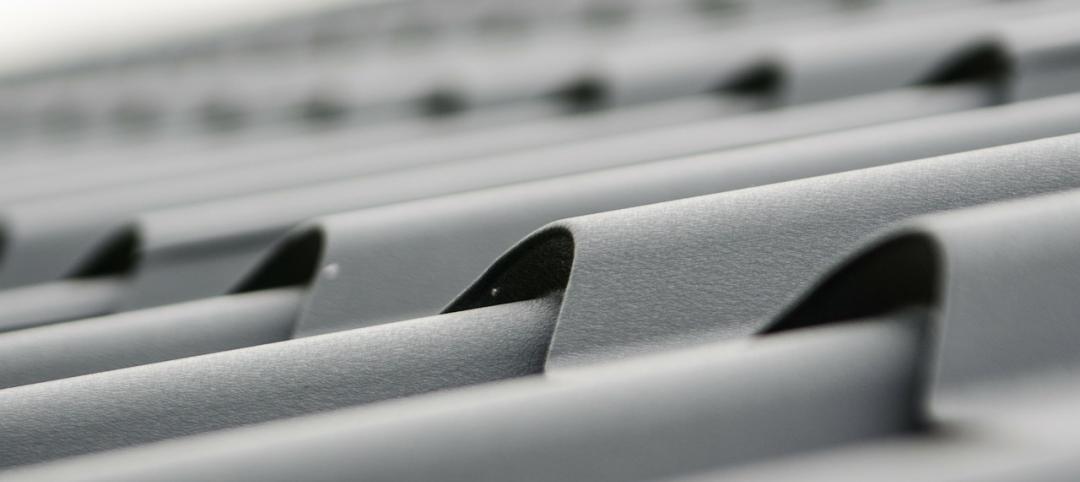 |
| HKS used its ARCHengine virtual environment to allow season ticket holders to see different views and angles of the $1 billion Cowboys stadium project. |
4. Architectural Visualization through Gaming Technology
ARCHengine was able to show different views
from different seats and allow potential season ticket holders to walk, or fly, through the stadium. Now, other visualization programs are following Carmichael's lead and using gaming engines to show architectural design.5. Free Online Design Tool for Energy Estimating and Evaluation
To help its 1,500-plus architects design energy-efficient buildings toward meeting AIA's 2030 Challenge, Perkins+Will in April launched an online energy estimating and evaluation tool for new construction and retrofit projects. The firm made the tool available to the public for free at http://2030e2.perkinswill.com.
The 2030 e2 Energy Estimating Tool allows users to set targets in four key areas—energy efficiency, on-site renewable energy, grid-supplied renewable energy, and green power offsets—and assess a building's design against the goals of the 2030 Challenge, which calls for an immediate 50% reduction in carbon emissions of buildings and carbon neutrality by 2030.
Plug in the project name, location, and start date, as well as key energy-related information such as regional fuel mix and baseline energy use for the area, and the tool automatically tracks progress toward 2030.
"The 2030 e2 Energy Estimating Tool allows designers to explore different percentages of these elements to achieve the 2030 goals," says Doug Pierce, AIA, LEED, senior associate in Perkins+Will's Minneapolis office and developer of the tool. "Additionally, the tool can be used over and over to confirm 2030 compliance throughout the life of the project." |
| This model, seen on the Web in the ICEvision viewer, allows full examination of the architect’s Revit model. The client used the viewer to “fly” up to his office window to see what his sightline would be like during a game. |
6. Easy AutoCAD and Revit File Sharing
 |
| An example of how BIM virtual mockups work: The fi rst fi gure shows a point on a roof where a radius needed to intersect with a tangent. However, the meeting point left no room for construction workers to caulk or fl ash the joint. |
 |
| The virtual mockup in the second figure shows how JE Dunn and its architect modeled a solution during the design stage that would permit worker access to the point of contention, thus saving a costly change order during construction. |
7. BIM Virtual Mockups Found to be Less Expensive than Physical Mockups
BD+C's Giants BIM adoption list
) is also using 3D models for constructability analysis, including field conditions. All information (even 2D CAD) that JE Dunn receives from their architects on big projects is put into a 3D model. From there, virtual mockups are created to make sure construction conditions, such as room for a ladder and a worker to flash or caulk a joint, are checked out and confirmed to be buildable (see example below). |
| With Double-Take data backup, Gould Evans’s main server is in constant contact with an SRO image server. Double-Take replicates and compresses the backup data to take up less space. |
8. Backup Software Saves Data, Money at Gould Evans
Gould Evans needed to trim the cost of its tape-only data storage and backup system. IT manager Chet LaBruyere wanted to improve the accessibility of the system to all 150 Gould Evans employees in the firm's five offices—Kansas City, Mo., Lawrence, Kan., Phoenix, Tampa, and San Francisco—and reduce the risk of data loss between them. After testing several systems, LaBruyere decided to go with Riverbed WAN technology and data replication software from Double-Take. This solution enabled Gould Evans to store all of its backed-up data on one SRO image server accessible to all offices. Double-Take's replication software is hardware agnostic, so it can back up work from Mac, LINUX, or Windows computers. The new system reduces backup labor from 36 human-hours a week to one or two human-hours a week and saves $55,250 a year, plus another $8,400 in annual savings in tape media. Double-Take's system has reduced the total amount of data on Gould Evans's servers by 52% while more than doubling their WAN's bandwidth capacity.
Related Stories
Brick and Masonry | Feb 5, 2015
3D-printed 'cool brick' may provide cooling solution for arid locations
Cool Brick is made of porous ceramic bricks set in mortar. The bricks absorb water, which cools the air as it passes through the unit.
Green | Feb 4, 2015
Illinois leads top 10 states for LEED green building
Collectively, 1,662 commercial and institutional projects became LEED certified within the top 10 states in 2014, representing 251.7 million sf of real estate.
Sponsored | Metals | Jan 30, 2015
Want greater energy savings? The answer is right above you
A recent study finds that metal roofs can cut energy costs.
Energy Efficiency | Jan 28, 2015
An urban wind and solar energy system that may actually work
The system was designed to take advantage of a building's air flow and generate energy even if its in the middle of a city.
Sponsored | Energy Efficiency | Jan 23, 2015
Rapid payback and reduced consumption with modulating buildings
| Jan 21, 2015
Tesla Motors starts construction on $5 billion battery plant in Nevada
Tesla Motors’ “gigafactory,” a $5 billion project on 980 acres in Sparks, Nev., could annually produce enough power for 500,000 electric cars.
| Jan 14, 2015
Winners of the 2014 Architecture at Zero competition announced
The competition challenged design teams to create zero-net-energy buildings for the Jack London Gateway project site in Oakland, Calif.
| Jan 7, 2015
Department of Energy seeks public input on definition for zero-energy buildings
A broadly accepted market definition of zero-energy buildings is foundational to efforts by governments, utilities, or private entities to recognize or incentivize zero energy buildings.
Smart Buildings | Jan 7, 2015
NIBS report: Small commercial buildings offer huge energy efficiency retrofit opportunities
The report identifies several barriers to investment in such retrofits, such as the costs and complexity associated with relatively small loan sizes, and issues many small-building owners have in understanding and trusting predicted retrofit outcomes.
| Dec 28, 2014
Using energy modeling to increase project value [AIA course]
This course, worth 1.0 AIA LU/HSW, explores how to increase project value through energy modeling, as well as how to conduct quick payback and net present value studies to identify which energy strategies are most viable for the project.
















